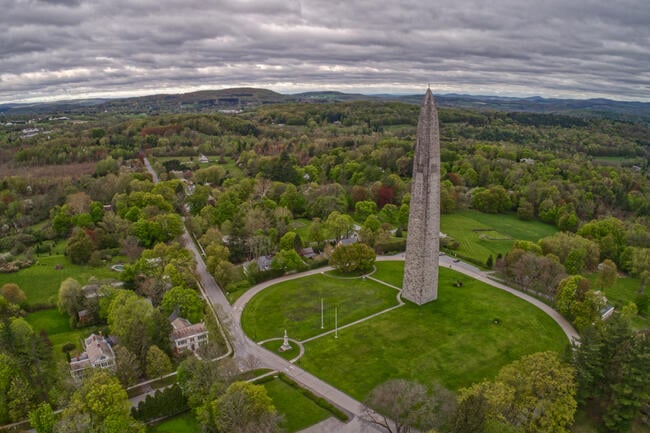You have /5 articles left.
Sign up for a free account or log in.

Jacob Boomsma/iStock/Getty Images Plus
It gets late early out there.”
—Yogi Berra
Does college admission need another application plan? We already have early decision and early decision 2, both binding, and early action and restricted early action, not binding. There is rolling admission, where students receive a decision once their application is complete, and on-site admission, where students present their credentials and receive a same-day decision either during a campus visit or at their high school. Of course, we still have regular decision, although there is some debate about how regular it is these days.
The question about whether we need another admission plan is raised by the recent announcement by Bennington College that it will offer a “late-decision” plan this spring. Students who apply to Bennington by April 8 will receive an admission decision by April 17. May 1 will continue to be the deadline for submitting an enrollment deposit, but students applying under the late-decision plan may request an extension. Bennington is “guarding” 15 spaces in the freshman class, “including proportional merit- and need-based financial aid awards,” for late-decision applicants.
The Bennington announcement raises some interesting questions. What’s the genesis of late decision? How do the 15 reserved late-decision slots impact decisions for applicants in regular decision or off the wait list? And is late decision a gimmick or the beginning of a trend?
Bennington provides two justifications for the new plan. It references calls from college counselors it receives “every spring” inquiring about the possibility of a late application for students not satisfied with their options. It also alludes to students who are “reconsidering where they want to learn and live for college altogether given the changing political, social, and physical climates.”
There have always been students who get to the end of the process and aren’t satisfied with their choices. There are also plenty of colleges with space available at this time of year that will gladly accept applications, and there are plenty (and perhaps a growing number) of colleges that will work past May 1 and through the summer to lock down the entering class.
As for the “ripped from today’s headlines” rationale, I wonder: Will the political and cultural division in our country impact where students choose to apply to and enroll in college? I have heard from colleagues who are seeing parents who are not willing to allow their children to attend colleges perceived as not confronting antisemitism aggressively enough, and I have also heard accounts of students ruling out colleges because they are located in red or blue states.
So is late decision something different or just a way to signal that “even though our application deadline has passed, we’re still soliciting, and hoping for, additional applications”? One of the downsides of setting an application deadline is that once the deadline passes, students are unlikely to apply. If an institution doesn’t receive enough applications by the deadline, it may find itself requiring life support.
There is an etiquette for colleges that find themselves needing applications post-deadline. You never want to look desperate (even if you are) and admit that your application numbers aren’t promising.
There are two common strategies. One is the “by popular demand” approach, wherein the application extension is said to be a response to public pressure. Bennington uses a version of this in stating that it has received numerous inquiries from college counselors regarding students who are interested in applying late to Bennington.
The other strategy is to tie a deadline extension to some newsworthy event, preferably weather-related. If you are a college needing to extend your deadline, hope for a volcanic eruption in Iceland. That is not the same thing, of course, as extending deadlines for humanitarian reasons, as happened this year for students impacted by Hurricane Helene or the California wildfires.
The most fascinating aspect of the Bennington announcement is that it plans to reserve 15 spaces for late-decision applicants. Bennington states that “holding space for competitive students coming to our process late is part of an accessible, holistic, and supportive admissions process.”
That makes me wonder just how many applications Bennington thinks it will receive through the late-decision plan. Obviously at least 15, if they are guarding that many spots. If one of the drivers of the new program is calls from counselors with students interested in applying to Bennington, how many of those calls are they getting?
According to Bennington’s 2023–24 Common Data Set, its admissions yield rate was 16 percent. At that rate, Bennington would need almost 100 applications to enroll 15 students. We can anticipate that the yield for late-decision applicants would be substantially higher, but even at 50 percent Bennington would need to generate 30 new applications. Is that reasonable? Bennington is a unique place that would probably not be a fit for just any student.
There is also a question about how late decision will impact regular-decision applicants. Is Bennington less likely to use its wait list as a result of guarding the 15 spaces for late decision? According to the Common Data Set, Bennington admitted only six students off the wait list for the fall of 2023. More surprisingly, it offered wait-list status to only 77 of the more than 1,400 students it didn’t admit outright. That is a strikingly tiny wait list. By contrast, another Vermont liberal arts college, Middlebury College, had more than 2,000 students on its wait list. There has always been a debate about what message being placed on a wait list sends. The most common interpretation is, “We’d like to admit you, but don’t have space.” Being wait-listed might also mean, “We don’t really want to admit you but might need to.”
So is late decision a gimmick or the beginning of a trend, even a movement? If Middlebury or Bowdoin or Williams Colleges had announced that they were reserving 15 admission slots for late applicants, that would be newsworthy, even revolutionary, because those places are all highly selective and don’t need a late admission plan to fill their freshman class. Bennington is selective, but not at that level. Will this make a difference for Bennington, and will other places follow? Or will late admission be more like the tuition resets, where a college announces a revolutionary lowering of price (with a corresponding lowering of financial aid), steps out to lead the parade, and finds that few or none are following?
The tallest man-made structure in the state of Vermont is the Bennington Battle Monument. The 306-foot-high obelisk commemorates the 1777 Revolutionary War Battle of Bennington (which actually took place about five miles away in New York State). If late decision catches on and changes college admission, the battle may become the second-most revolutionary thing the town of Bennington is known for.




